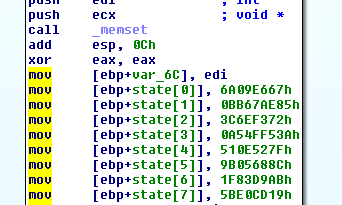Rapid7’s 2022 Vulnerability Intelligence Report

Last updated at Tue, 28 Feb 2023 17:35:54 GMT
Each year, the research team at Rapid7 analyzes thousands of vulnerabilities in order to identify their root causes, broaden understanding of attacker behavior, and provide actionable intelligence that guides security professionals at critical moments. Our annual Vulnerability Intelligence Report examines notable vulnerabilities and high-impact attacks from 2022 to highlight trends that drive significant risk for organizations of all sizes.
Today, we’re excited to release Rapid7’s 2022 Vulnerability Intelligence Report—a deep dive into 50 of the most notable vulnerabilities our research team investigated throughout the year. The report offers insight into critical vulnerabilities, widespread threats, prominent attack surface area, and changing exploitation trends.
2022 attack trends
The threat landscape today is radically different than it was even a few years ago. Over the past three years, we’ve seen zero-day exploits and widespread attacks chart a meteoric rise that’s strained security teams to their breaking point and beyond. While 2022 saw a modest decline in zero-day and widespread exploitation from 2021’s record highs, the multi-year trend of rising attack speed and scale remains strikingly consistent overall.
Report findings include:
- Widespread exploitation of new vulnerabilities decreased 15% year over year in 2022, but mass exploitation events were still the norm. Our 2022 vulnerability intelligence dataset tracks 28 net-new widespread threats, many of which were used to deploy webshells, cryptocurrency miners, botnet malware, and/or ransomware on target systems.
- Zero-day exploitation remained a significant challenge for security teams, with 43% of widespread threats arising from a zero-day exploit.
- Attackers are still developing and deploying exploits faster than ever before. More than half of the vulnerabilities in our report dataset were exploited within seven days of public disclosure—a 12% increase from 2021 and an 87% increase over 2020.
- Vulnerabilities mapped definitively to ransomware operations dropped 33% year over year—a troubling trend that speaks more to evolving attacker behavior and lower industry visibility than to any actual reprieve for security practitioners. This year’s report explores the growing complexity of the cybercrime ecosystem, the rise of initial access brokers, and industry-wide ransomware reporting trends.
How to manage risk from critical vulnerabilities
In today’s threat landscape, security teams are frequently forced into reactive positions, lowering security program efficacy and sustainability. Strong foundational security program components, including vulnerability and asset management processes, are essential to building resilience in a persistently elevated threat climate.
- Have emergency patching procedures and incident response playbooks in place so that in the event of a widespread threat or breach, your team has a well-understood mechanism to drive immediate action.
- Have a defined, regular patch cycle that includes prioritization of actively exploited CVEs, as well as network edge technologies like VPNs and firewalls. These network edge devices continue to be popular attack vectors and should adhere to a zero-day patch cycle wherever possible, meaning that updates and/or downtime should be scheduled as soon as new critical advisories are released.
- Keep up with operating system-level and cumulative updates. Falling behind on these regular updates can make it difficult to install out-of-band security patches at critical moments.
- Limit and monitor internet exposure of critical infrastructure and services, including domain controllers and management or administrative interfaces. The exploitation of many of the CVEs in this year’s report could be slowed down or prevented by taking management interfaces off the public internet.
Also available are an infographic highlighting the main data points in the report, and a brief designed to provide greater context for C-suite and boardroom stakeholders.
2022 Vulnerability Intelligence Report
Read the report to see our full list of high-priority CVEs and learn more about attack trends from 2022.
READ MORE HERE



